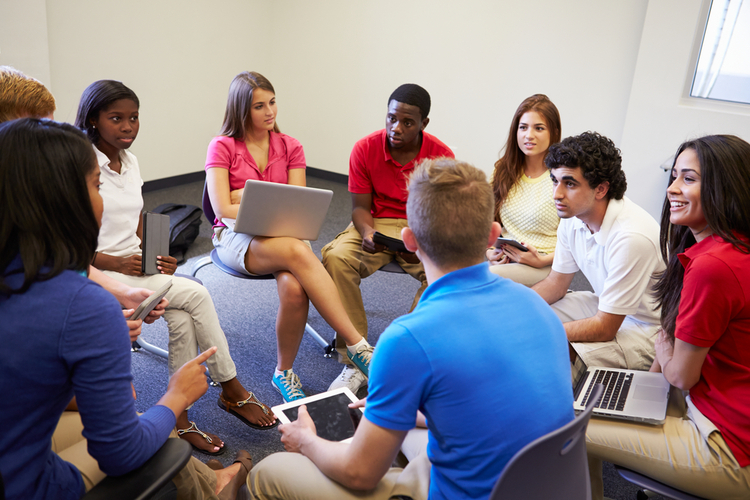
The Flipped Learning Technique

Engaging and involving as many students as possible in a classroom can be a daunting task for a teacher. To hear the voice and ideas of every student in a classroom may not always be feasible for teachers with a large number of students or simply due to the time limit to get the curriculum covered in class.
Each individual processes and comprehends information in different ways, therefore using various techniques in teaching opens up possibilities to connect with as many students as possible. One method which is being used by teachers more regularly is ‘inverted teaching’ and flipping the classroom. In simple terms flipping the classroom is “school work at home and home work at school”. However, we have broken down what the method is exactly and how it can be used effectively.
What is flipped learning?
Firstly, it must be noted that giving students reading to do before class or additional work to complete alongside normal class work is not flipped learning. The flipped learning approach should be used in the view of student driven learning; gaining essential knowledge away from the classroom and in turn the classroom becomes a space for interactivity and clarity to the topic with application.
Before class, students should be given materials such as videos, reading material and exercises that clearly and carefully outline and explain a topic. During class, students can demonstrate their comprehension of the material by sharing and communicating with the rest of the class. This also allows the teacher to check understanding and allows students to extend their learning. The teacher’s aim should be to guide their students to think deeply and apply their understanding.
Why Teachers Are Using this Technique
It gives students the responsibility to take control of their learning.
It allows the student time to reflect on and absorb the information rather than missing points that are made in class. Therefore the role is shifted and rather than students being passive, they become the main constructors of their own learning.
While applying and discussing their knowledge in class with other pupils they can expand their learning with direction from the teacher.
Being able to demonstrate their ability to apply their knowledge gives the teacher the opportunity to receive and give better feedback.
How to Flip the Classroom
There is not one model for how to flip a classroom. Each class is different and therefore requires unique creativity to achieve the best sessions. Different subjects require thought out approaches to delivering the matter and incorporating this into class sessions. To move the lesson away from the classroom, technology becomes an effective tool;
Reading materials with quizzes to be completed.
Create or find online videos that outline and explain a topic
Be creative here; some classes may require short lecture clips by the teacher themselves
Think about how to engage the topic in class by asking students to have questions prepared.
Ask them to use research skills to find and prepare relevant information to the topic at hand.
To try to prepare students for the class session as much as possible their aims should be clearly outlined with the amount of time expected to be spent on each activity. With this in mind, they should also be encouraged to create learning plans. However, what must be considered here is that students may not come to class prepared, therefore incentives should be introduced. These can include bonus points for doing well on quizzes on the topic, or you can be creative and cater the incentives to what you know your students will appreciate.
Make sure the students have understood that they are accountable for not doing these preparation activities. So that they recognise that the value of the class sessions will decrease for themselves as well as the rest of the class.
Once the above is established, the following techniques can be used to create the most effective learning opportunities;
Discussions/debates – give the students a chance to voice their opinions on an issue and develop their arguments.
Active learning – where questions can be asked to receive feedback and clarification from instructors or peers.
Group work – you can plan to assess their work through this method and it encourages interaction which makes sure all students are participating.
Peer instruction – by students teaching each other what they have learnt can also help their assessment.
Application – Especially in subjects like chemistry where experiments can take place, application of the knowledge absorbed is essential.
Some preparation must go into predicting how these classes may develop, especially during debates. Situations may arise where the direction of the debate is less predictable. It is understandable that relinquishing some control of the lesson feels risky, but finding ways to signal direction to move to the next activity is essential. You can prepare by reflecting on the topic yourself before the class to predict the different routes the class could go, and having back up plans.
Preparation is the most essential device to creating a successful flipped learning experience. Start with smaller activities in the vision of flipped learning to ease yourself into doing a full class with a flipped learning approach.

